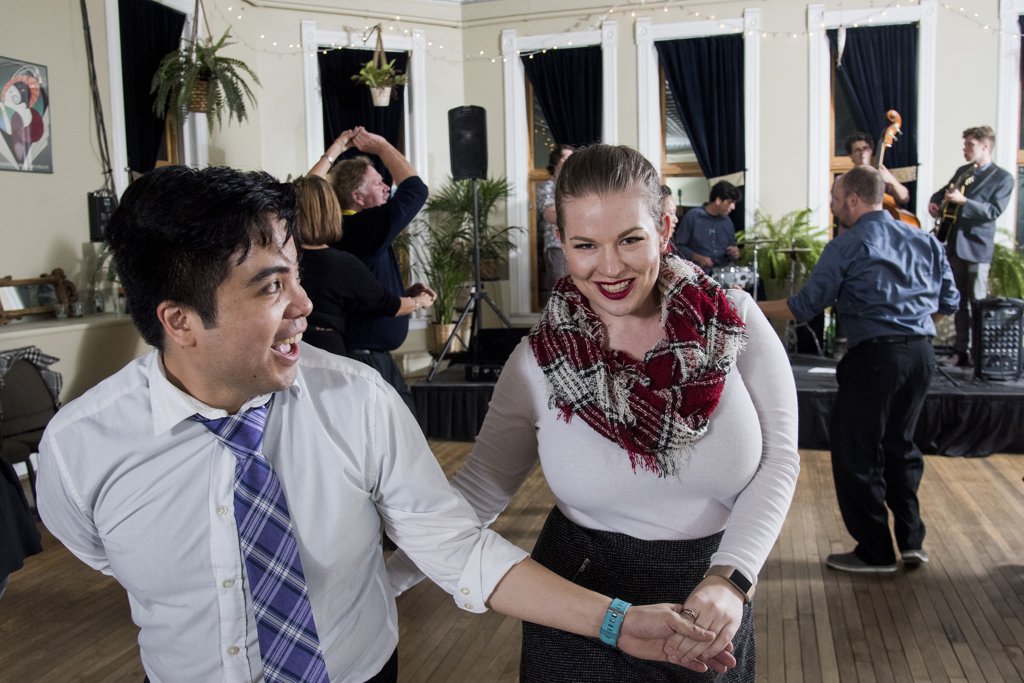Going into Camp Hollywood, my Lindy Hop was very out of practice. I would blame the COVID pandemic, but for a string of personal reasons, I had retreated from the dance I loved even before then. This meant going into an intermediate class was intimidating, but I told myself that if it felt like too much I could excuse myself, so I jumped into the second part of their class.
The title of their class, Developing the Essence, drew me in. The written description was that they would focus on the intention of the body and the idea of polycentrism both solo and partner. That idea—the polycentrism—is what I see in Marie and Felix’s dancing, and they do it spectacularly. Marie embodies the idea of the follow having their own autonomy in the partnership, and Felix “spotlights” her when she does it. As a follow, too often I feel like I am taking my moment at the expense of the lead, who then is taken by surprise and must recalculate to get us back into the rhythms. Watching Marie is powerful; she takes and owns her moment on her own turns. And she reciprocates in kind for Felix. When I watch them dance, I see the play behind it. I see the joy. I see the breakdown of the structure we can often think Lindy Hop has to have, and I see the essence of it instead.
Their class focused on breaking away from the 6 count pattern. I feel that this aligns with how Swingin’ Denver has moved away from using the counts in their teaching, either scatting through them or focusing on the movement itself (i.e. slow, slow, quick-quick). They stated that 6 count patterns tend to be the typical way swing is approached in the US, whereas in Europe they learn more of the 8 count pattern, and after looking online this seems to be a consensus. It also feels supported by the class experience; the majority of my leading partners looked like everything they knew about swing was called into question, and there were follows that shared in their frustrations.
Me? I could not have felt more validated in that class. This was an intermediate class, and I was rocking it, so maybe I wasn’t in as much of a slump as I had thought. More importantly, though, it gave me hope that more dancers would dig into that “essence” which would lead to me having more enjoyable dances. The truth is, when I’m more focused on marrying what I’m feeling to the music rather than working through a set of moves, I’m at my happiest. Otherwise, if I don’t nail a turn or miss a cue and that’s all my partnership is focused on, I feel like a disappointment and a failure because I didn’t fit someone else’s vision of what they wanted that dance to be. Marie and Felix showed me, in their class and in their dancing, that what I want is exactly how it can be.

